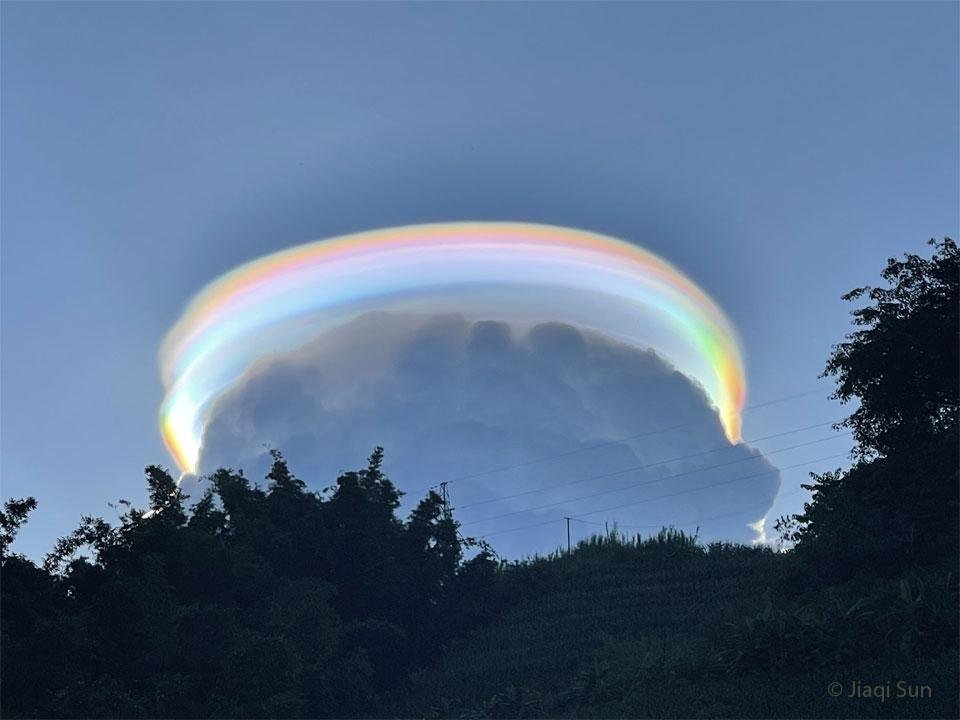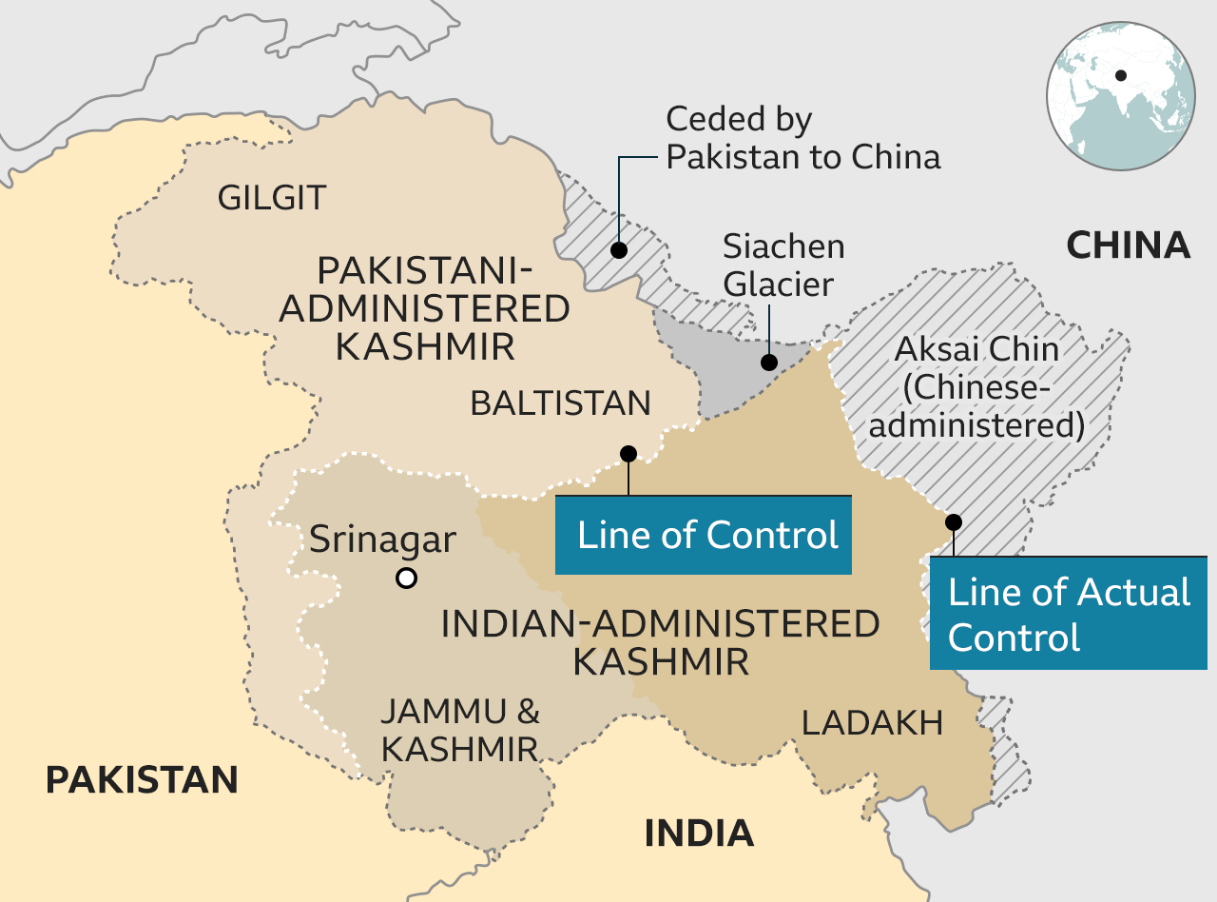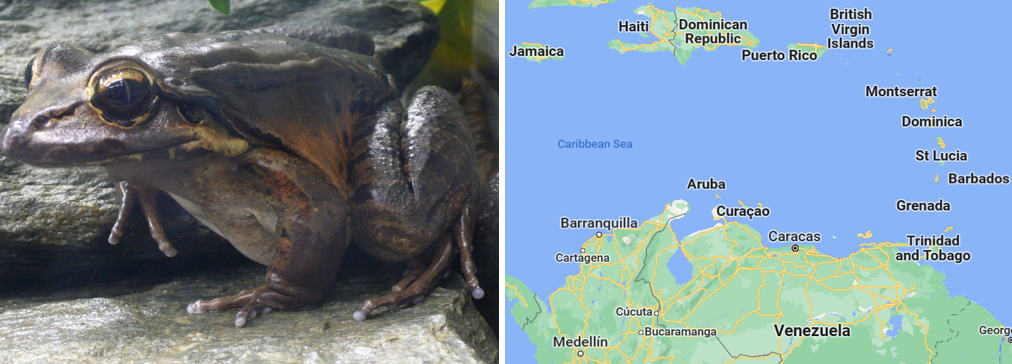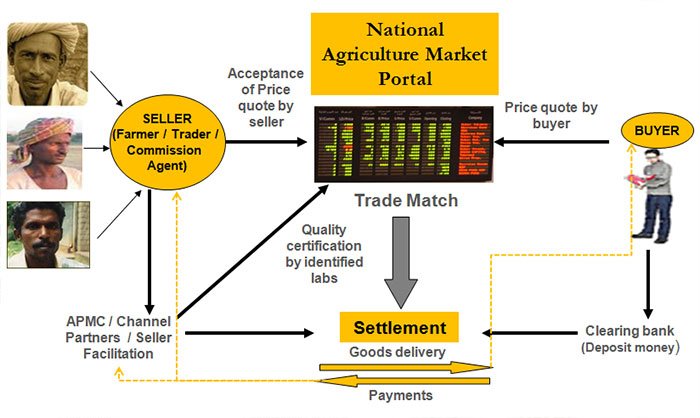
Current Affairs July 25, 2023: El Niño, Indian Ocean Dipole, Granite on the Moon, PM-DevINE, MPLADS
Subscribers of "Current Affairs" course can Download Daily Current Affairs in PDF/DOC
Subscribe to Never Miss an Important Update! Assured Discounts on New Products!
Must Join PMF IAS Telegram Channel & PMF IAS History Telegram Channel
{GS1 – Geo – PG – Climatology – 2023/07/25} El Niño and Indian Ocean Dipole (IOD)
- Context (IE): The development of a positive Indian Ocean Dipole (IOD) limits the El Niño effect.
Normal Conditions
- Warming and cooling of the Pacific is most important in terms of general atmospheric circulation.

- In a normal year,
- A surface low-pressure system develops in the region of northern Australia and Indonesia (western equatorial Pacific), and
- A high-pressure system develops near the coast of Peru and Ecuador (eastern equatorial Pacific).
- As a result, the trade winds (easterlies) over the Pacific Ocean move strongly from east to west.
- The easterly flow of the trade winds carries warm surface waters westward, bringing convective storms (thunderstorms) to Indonesia and coastal Australia.
- Along the coast of Peru, cold bottom nutrient-rich water wells up to the surface to replace the warm water that is pulled to the west.
Walker Circulation During Normal Years
- The Walker Circulation (Walker Cell) is caused by the pressure gradient force that results from a high-pressure system over the eastern Pacific and a low-pressure system over Indonesia.
- It is indirectly related to upwelling off the coasts of Peru and Ecuador. This brings nutrient-rich cold water to the surface, increasing fishing stocks.

|
El Niño
- El Niño is the name given to the occasional development of warm ocean surface waters along the coast of Ecuador and Peru.
- In an El Niño year,
- Air pressure drops over large areas of the central Pacific and along the coast of Peru, and
- The regular low-pressure system is replaced by a weak high in the western Pacific (the southern oscillation).
- The change in pressure pattern causes the trade winds to be reduced ― weak Walker Cell. Sometimes Walker Cell might even get reversed.
- This reduction allows the equatorial counter-current (west to east current along calm doldrums) to accumulate warm ocean water along the coastlines of Peru and Ecuador, replacing the cool Peruvian current.
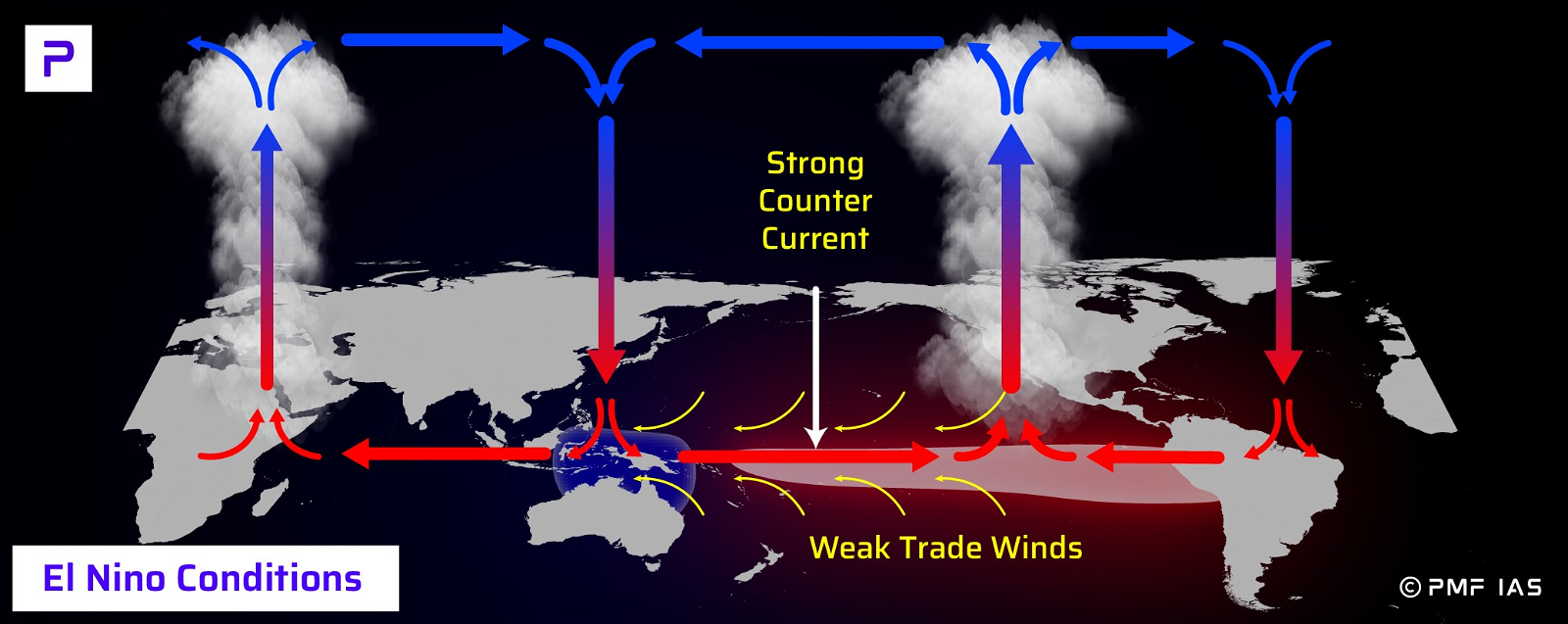
- The accumulation of warm water causes the thermocline to drop in the eastern part of the Pacific Ocean which cuts off the upwelling of cold deep ocean water along the coast of Peru.
- Climatically, the development of an El Niño brings
- Drought to the western Pacific (Indonesia and Northern Australia),
- Rains and floods to the equatorial coast of South America, and
- Strong convective storms and hurricanes to the central Pacific.
- El Niño typically occurs around Christmas and usually lasts a few weeks to a few months.
- Sometimes, an extremely warm event can develop that lasts for much more extended periods. For example, in the 1990s, strong El Niños developed in 1991 and lasted until 1995.
El Niño Southern Oscillation (ENSO)
- The formation of an El Niño (circulation of surface ocean current) is linked with the Pacific Ocean circulation pattern known as the southern oscillation.
- Southern Oscillation, in oceanography and climatology, is a coherent inter-annual fluctuation of atmospheric pressure over the tropical Indo-Pacific region.
- El Niño and Southern Oscillation (SO) coincide most of the time hence their combination is called El Niño Southern Oscillation (ENSO).
Normal Conditions
El Niño conditions
El Niño vs ENSO
|
El Niño Modoki
- Conventional El Niño is characterised by strong anomalous warming in the eastern equatorial Pacific.
- In contrast, El Niño Modoki is associated with strong anomalous warming in the central tropical Pacific and cooling in the eastern and western tropical Pacific.
- Such zonal gradients result in anomalous two-cell Walker Circulation over the tropical Pacific, with a wet region in the central Pacific and a dry region in the western and eastern Pacific.

[UPSC Prelims 2010] A new type of El Niño called El Niño Modoki appeared in the news. In this context, consider the following statements:
Which of the statements given above is/are correct?
Explanation:
|
Effects of El Niño and ENSO
- El Niño/ENSO phenomenon is studied for long-range forecasting. In the years when the ENSO is strong, large-scale variations in weather occur over the world:
- The arid west coast of South America receives heavy rainfall.
- Heavy rains and floods occur in California, Ecuador, the Gulf of Mexico and China.
- Severe droughts occur in Australia, Indonesia, India and southern Africa.
- The warmer ocean surface waters devastate marine life off the coast of Peru and Ecuador. Fish catches are lower in the region than in the regular year.
Normal Conditions
El Niño/ENSO
|
[UPSC Mains 2014] Most of the unusual climatic happenings are explained as an outcome of the El-Niño effect. Do you agree? |
Impact of El Niño on Indian Monsoons
- El Niño/ENSO and Indian monsoon are inversely related. The most prominent droughts in India have been El Niño droughts, including the recent ones (2014-16).
- El Niño directly impacts India’s agrarian economy as it tends to lower the production of summer crops such as rice, sugarcane, cotton and oilseeds. The ultimate impact is seen in the form of high inflation and low GDP growth, as agriculture contributes around 14 per cent to the Indian economy.

Explanation
- The location of low-pressure and hence the rising limb of the Walker Cell over the Western Pacific is considered conducive to good monsoon rainfall in India.
- The eastward shift of the rising limb of the Walker Cell from its normal position, such as in El Niño years, reduces monsoon rainfall in India.
Southern Oscillation Index and Indian Monsoons
- Southern Oscillation Index (SOI) is used to measure the intensity of the Southern Oscillation. This is the difference in pressure between Tahiti in French Polynesia (Central Pacific), representing the Central Pacific Ocean and Port Darwin (in northern Australia), representing the Eastern Pacific Ocean.
- The positive and negative values of the SOI, i.e. Tahiti minus the Port Darwin pressure, point towards good or bad rainfall in India.
| Positive SOI | Negative SOI |
| Tahiti (eastern Pacific) pressure is greater than that of Port Darwin (western Pacific) | Reverse |
| Drought conditions in Eastern Pacific & good rainfall in Western Pacific | Reverse |
| Good for Indian Monsoons | Bad for Indian Monsoons |
La Niña
- After an El Niño event, weather conditions usually return to normal. However, in some years, the trade winds can become extremely strong, and an abnormal accumulation of cold water can occur in the central and eastern Pacific. This event is called a La Niña.

Effects of La Niña
- Abnormally heavy monsoons in India.
- Strong hurricane season in the Atlantic Ocean. (Hurricane Mitch (1998), the second-deadliest Atlantic hurricane on record (11,374 fatalities), developed during a strong La Niña year).
- Drought over central North America.
[UPSC Prelims 2002] For short-term climatic predictions, which one of the following events, detected in the last decade, is associated with occasional weak monsoon rains in the Indian subcontinent?
Explanation:
[UPSC Prelims 2011] La Niña is suspected of having caused recent floods in Australia. How is La Niña different from El Niño?
Which of the statements given above is/are correct?
Explanation:
|
Indian Ocean Dipole Effect (Not Every El Niño Year Is The Same In India)
- Not all El Niño/ENSO years led to a drought in India. For instance, 1997/98 was a strong El Niño year but no drought. On the other hand, a moderate El Niño in 2002 resulted in one of the worst droughts.
- It was discovered that just like ENSO, a similar but less significant seesaw ocean-atmosphere system named the Indian Ocean Dipole (IOD/Indian Niño) was also at play.
- IOD is defined by the difference in sea surface temperature between two areas in the equatorial region of the Indian Ocean (or poles, hence a dipole) ― a western pole in the Arabian Sea (western Indian Ocean) and an eastern pole in the eastern Indian Ocean south of Indonesia.
EQUINOO
- Similar to ENSO, the atmospheric component of the IOD was named Equatorial Indian Ocean Oscillation (EQUINOO) — oscillating warm water and atmospheric pressure between the Bay of Bengal and the Arabian Sea.
- During positive IOD, winds over the Indian Ocean blow east to west (from the Bay of Bengal towards the Arabian Sea). This results in the Arabian Sea being much warmer and the eastern Indian Ocean around Indonesia becoming colder and dry. During the negative IOD, the reverse makes Indonesia much warmer and rainier.
- IOD starts to develop in April and is best devolved in October. It was demonstrated that a positive IOD index often negated the effect of ENSO, resulting in increased Monsoon rains in several ENSO years like 1983, 1994 and 1997.
The Role of ENSO in the Development of IOD
- A positive IOD event often develops at times of an El Niño, while a negative IOD is sometimes associated with La Niña. During El Niño, the Pacific side of Indonesia is cooler than normal because of which the Indian Ocean side also gets cooler.
Impact of IOD On Cyclogenesis In the Northern Indian Ocean
- Positive IOD (the Arabian Sea is warmer than the Bay of Bengal) results in more cyclones than usual in the Arabian Sea.
- Negative IOD results in stronger than usual cyclogenesis in the Bay of Bengal. Cyclogenesis in the Arabian Sea is suppressed.




[UPSC Prelims 2017] With reference to ‘Indian Ocean Dipole (IOD)’ sometimes mentioned in the news while forecasting the Indian monsoon, which of the following statements is/are correct?
Select the correct answer using the code given below:
Explanation:
|
{GS1 – Geo – PG – Geomorphology – 2023/07/25} Granite on the Moon
- Context (WION | IT): A large granite formation has been discovered under a suspected volcanic feature on the moon’s surface called Compton-Belkovich.
- The discovery of this batholith proves the existence of ancient volcanic activity on the lunar surface.
- The granite formation was discovered using microwave frequency (which helps measure the heat below the surface) data gathered by two Chinese lunar orbiters, Chang’E-1 in 2010 and Chang’E-2 in 2012.
|
Granite
|
More information on Volcanism > PMF IAS Physical Geography 1st Edition
{GS2 – MoDNER – 2023/07/25} PM-DevINE
- Context (PIB): Prime Minister’s Development Initiative for North East Region (PM-DevINE) Scheme aims to address development gaps in the North East Region.
- PM-DevINE scheme was announced as a 100% Central Sector Scheme in Budget 2022-23.
- The scheme has an outlay of Rs. 6,600 crore for the four years from 2022-23 to 2025-26.
- It is implemented by the Ministry of Development of North Eastern Region (DoNER) through the North Eastern Council (NEC).
Objectives
- Fund infrastructure convergently in the spirit of PM GatiShakti.
- Support social development projects based on the felt needs of the North Eastern Region (NER).
- Enable livelihood activities for youth and women.
- Fill the development gaps in various sectors.
North Eastern Council (NEC)
- It is the nodal agency of MoDNER overseeing the economic and social development of the NER.
- It is a statutory advisory body constituted under the NEC Act 1971.
- The headquarters of the council is situated in Shillong.
Members
- The Governors and the Chief Ministers of the eight-member States.
- Chairman and three Members nominated by the President of India.
Functions
- The council discusses any matter in which some or all of the States represented in the Council have a common interest and advises the Central and State governments concerned, particularly concerning:
- Any matter of common interest in economic and social planning.
- Any matter concerning inter-State Transport and Communications.
- Any matter relating to Power or Flood-control projects of common interest.
Ministry of Development of North Eastern Region (MoDNER)
North Eastern Region (NER)
|
{GS2 – MoSPI – 2023/07/25} MPLADS
- Context (PIB): MPLADS funds can now be used to purchase IT systems and software for educational purposes (technical education) as per new MPLADS guidelines.
- Members of Parliament Local Area Development Scheme (MPLADS) is a Central Sector Scheme formulated by the GoI in 1993-94.
- MPLADS enables the members of parliament (MPs) to recommend developmental work in their constituencies, emphasising creating durable community assets based on locally felt needs such as drinking water, education, public health, sanitation, roads etc.
- The Ministry of Statistics and Programme Implementation (MoSPI) is responsible for the policy formulation, release of funds and monitoring for the implementation of the Scheme.
Features
- The Annual MPLADS fund is Rs. 5 crore per MP constituency.
- MPLADS funds are non-lapsable, either at the end of the Union Government or the District Authority.
|
- MPs must recommend works yearly for SCs (15%) and STs (7.5%) areas out of the total amount.
- Lok Sabha Members can recommend works within their Constituencies.
- Elected Members of the Rajya Sabha can recommend works within the State of Election.
- Nominated MPs of both the Rajya Sabha & Lok Sabha can recommend works anywhere in India.
- Expenditure on specified items of non-durable nature is also permitted, as listed in the guidelines.

Issues with MPLADS
| Issue | Description |
| Lack of transparency and accountability |
|
| Ineffective targeting of funds |
|
| Lack of participation by local communities |
|
| Inadequate monitoring and evaluation |
|
| Lack of statutory backing |
|





![PMF IAS Environment for UPSC 2022-23 [paperback] PMF IAS [Nov 30, 2021]…](https://pmfias.b-cdn.net/wp-content/uploads/2024/04/pmfiasenvironmentforupsc2022-23paperbackpmfiasnov302021.jpg)


